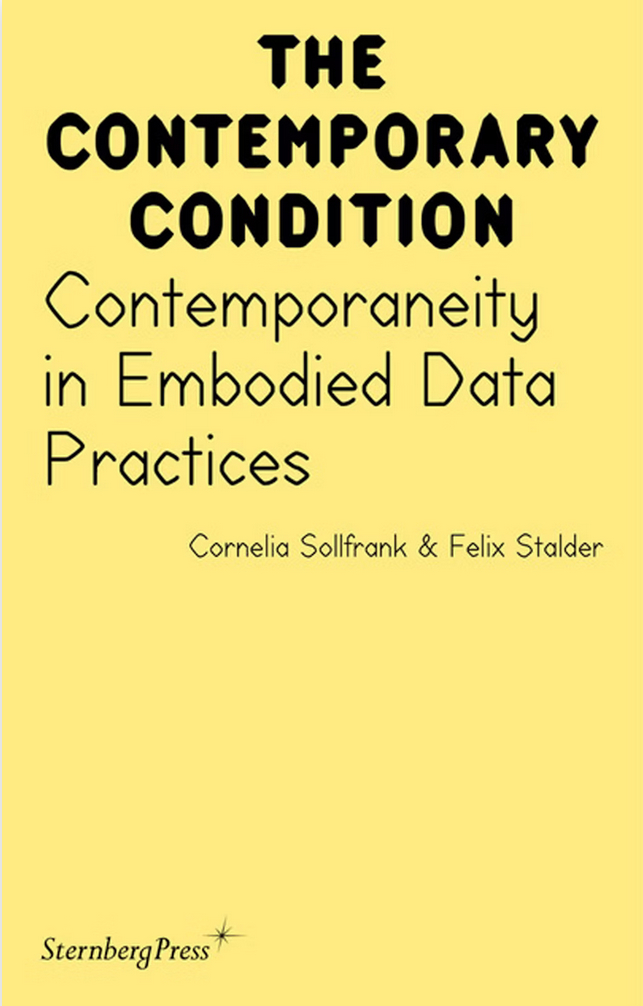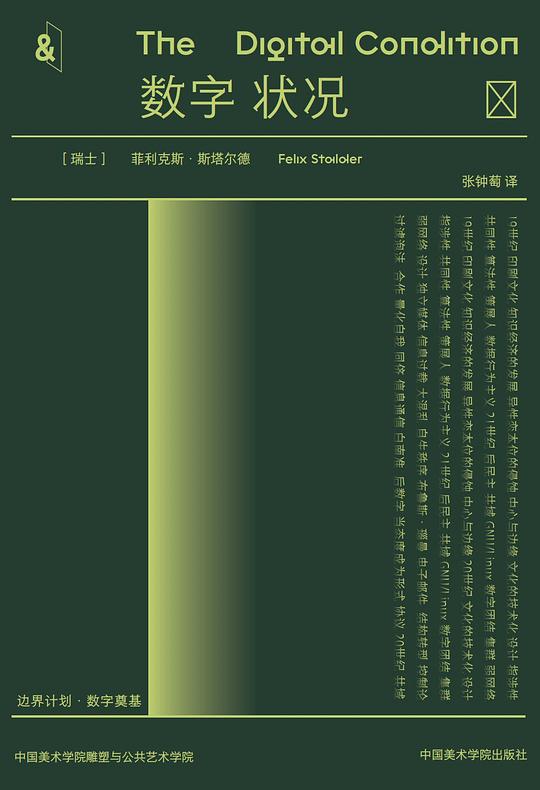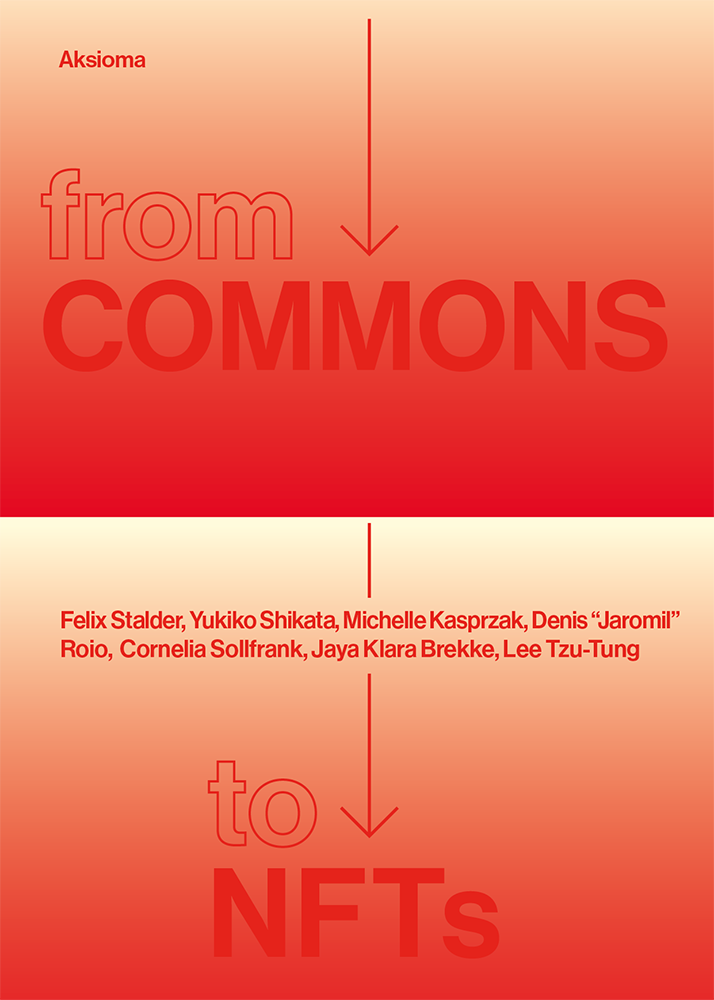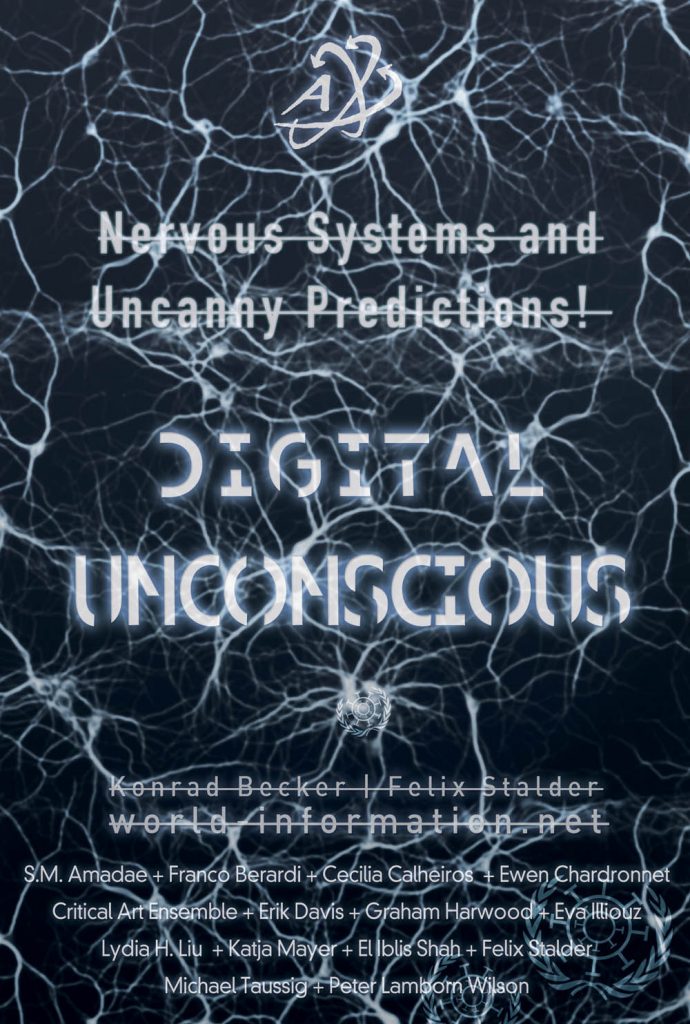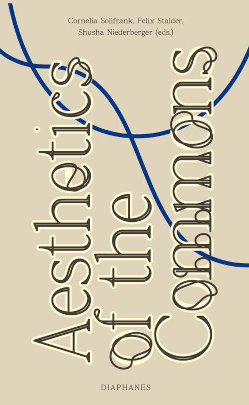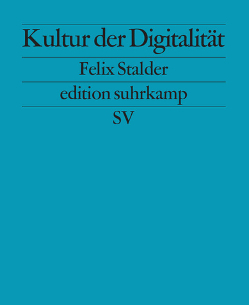
The term agency is particular to the English language. It has, for example, no direct German equivalent. It is usually rendered by the German words Handlungsfähigkeit (ability to act), Handlungsvermögen (faculty for acting), and even Handlungsmacht (power to act). What is meant is the ability of an agent within a given situation to react not only in a predetermined way but also to influence oneself and others with a certain degree of freedom. Why, then, does this term appear in a book about the cultural public sphere and digitalization? We start from the assumption that as complex, dynamic technologies of communication play in central tole in constituting the public sphere(s), new forms of agency emerge. The digital condition thus profoundly affects the agents and dynamics in which culture is perceived and reflected. To better understand this, it makes sense to clarify the concept of agency in this context.
Individual and Collective Action
In the political theory of classical liberalism, the agency is anchored in the rational individual him- or herself.it is based on the individual’s free will, capacity for self-reflection, rationality, and intentionality of action.[i] In most other theoretical perspectives, however, agency is understood as a relational concept, insofar as it is directly related to the circumstances in which an agent is situated, and it is this relationship that determines the extent of the agency.
Marxist theory situates agency primarily at the level of the collective, which is formed through its objectively historical conditions. As Marx put it: “Humans make their own history, but they do not make it of their own accord; they do not make it under self-selected circumstances, but under circumstances existing already, given and transmitted from the past.”[ii] Post-Marxist, psychoanalytic, and poststructuralist positions likewise conceive of the ability to act in opposition to the liberal idea of rational autonomy and see this as the effect of ideological (see Althusser), unconscious (see Freud), or linguistic processes and apparatuses (see Foucault) that to a substantial degree lie beyond or at least outside the control of the individual. More-contemporary feminist theory (see Butler) emphasizes the tension between normative apparatuses and subversive and resistant practices. For the majority of modern theory formation, agency has been reserved for human subjects. Not until the 1980s did poststructuralism begin to be interested in the potential of non-human agents.
With regard to the question of agency in technological settings, key concepts of poststructuralist theory are the “machine” or “assemblage” (Deleuze/Guattari) and “agent network” (Latour). Indirectly referring to Marx's “Fragment on Machines,” Deleuze/Guattari no longer see the machine as an apparatus (that is, as a clearly delineated object), but as a “machinic structure [that maintains] all kinds of relationships with social components and individual subjectivities.”[iii] “Machine” has a double meaning here: as a tool and as a social practice, as something that both exists as heterogeneous components and also brings these components into a specific but mutable context. One and the same thing can be a tool or part of a machine, depending on how it relates to humans and other things [iv] (see “ Human-Machine Relationships”).
What is important here is that the machine (in the sense of a tool) does not supersede or replace humans, but that in the machinic structure the widest variety of elements—subjects, objects, signs, desires, and so on—communicate with each other, mutually defining each other and thus forming a new entity with agency. Forms of agency thus emerge, both as virtual potential and as an actual event, that do not merely represent the sum of all individual potentials. For Deleuze/Guattari (and also for techno-feminist positions such as those of Donna Haraway [v]), it is important that these interconnections are unstable and open to being changed and adapted. They always contain a surplus of possibilities and internal contradictions that can be developed in different directions.[vi]
Bruno Latour empirically deploys this abstract idea of machines by conceptualizing it as a network of different agents, often emphasizing that these agents encompass both “humans” and “non-humans.”[vii] Agency arises from a situation in which different agents are linked to concatenated actions, and within these concatenations (or networks) each agent assumes a specific, sometimes more, sometimes less precisely defined role or function. The various agents mutually determine their spheres of activity—and thus their relational identity—in such a way that the concatenated actions are not interrupted but instead that “translations” from one agent to another take place continually.[viii] It is also these concatenations of actions, consisting of concrete, observable, and nameable agents, that form social structures. In this sense, there is no difference between agent and structure in Latour’s perspective. To understand structures, one has to “follow the agents” and see how they mutually define each other and stabilize the translations.[ix] In so doing, it is precisely material heterogeneity that can provide stability.
A third central perspective for conceiving of agency in relation to technological systems comes from the American sociologist Langdon Winner. In his pioneering essay “Do Artifacts Have Politics?” he argued not only that the political nature of technologies arises from their use but that political programs are already built into the technologies themselves in order to then develop their impact in every form of use.[x] Winner used two examples to explain this. The development of a machine capable of harvesting tomatoes carries within it the program of industrial rationalization and alters the balance between labor and capital in favor of the latter. The fact that such machines are founded on basic research from universities is an expression of the capitalistic structure of society. A second example is the urban planning conducted in New York by Robert Moses in the late 1920s. Moses had bridges constructed over a new highway leading out of the city that were too low for buses to operate on it; the highway led to a recreational area off the southern coast of Long Island that had been recently opened (Jones Beach). The result was that anyone who relied on public transportation was denied access to this beach. The construction of the bridges thus contributed to the segregation of society, regardless of the intentions of those driving along the new highway.
Empowerment, Control, and Protocols
The current debate about how communication technologies are altering agency is taking place along three vectors. The perspective of empowerment emphasizes the abilities of individuals to vastly expand their agency by recourse to complex infrastructures. The perspective of control, on the other hand, focuses on the potential for the operators of large-scale communication platforms to observe and influence social or community dynamics in real time. A third perspective looks at the role of socio-technical protocols that do not determine agency yet nevertheless constitute it in a specific way, thus wielding a very different kind of influence (see “Media and the Public Sphere”).
The discourse of empowerment is based on the fact that a great many actions—such as sending thousands of messages, publishing film and video material, or real-time cooperation over great distances—that have long required a considerable institutional apparatus are nowadays accessible to individuals or to small groups. The reason for this is the availability, more or less free of charge, of complex and powerful technologies, whether in the form of open-source software or user-friendly commercial platforms. This has radically expanded the sphere of those who have access to these infrastructures and who as a result have new powers of agency at their disposal. Both optimistic and pessimistic conclusions can be drawn from this.
Take Clay Shirky, who was an influential consultant and media analyst in the 2000s. He argued that this expansion was linked to a great democratic potential because it widened the opportunities for action of civil society and individual citizens. As an example, he cited the opportunities for victims of sexual violence to organize against the Catholic Church, in whose institutions such violence had for decades taken place without ever being prosecuted. Thanks to new technologies, the victims were able to network and support one another. At the same time, they had access to publication channels that could not be influenced by the church and that were not subject to the rapid change of topics that characterizes the commercial news media. Shirky deduced from this that it was now possible to organize interests that had previously been unorganizable, because the costs would have been too high under analogous conditions: “We are used to a world where little things happen for love and big things happen for money. Love motivates people to make a cake and money motivates people to make an encyclopedia. Now, though, we can do big things for love.”[xi] In other words, thanks to the reduction in coordination costs, people can now do things for which there is neither a market nor public money, but for which there is a social interest.
Security authorities have drawn opposite conclusions from fundamentally similar considerations. They see that all of these infrastructural capabilities are now available to terrorists or other “hostile agents,” who, without forming a large organization themselves, can do damage to an extent previously possible only for the military and intelligence services. These security authorities have spoken of “super-empowered individuals,” whose power is based not only on their greater degree of agency but also on their understanding that there are points in complex systems where even minor disruptions trigger larger cascades of disruption, which would thereby strengthen their power. In this vision of empowerment, the focus is not on the potential for a democratic counter-power but rather on the loss of control caused by the proliferation of agents.
Thus, while the discourse concerning emancipative empowerment takes in the user’s perspective and focuses on the “front-end”—that is, the publicly accessible parts of new infrastructures—the discourse of control concentrates on those aspects of infrastructures that are not publicly accessible, the so-called “back-end.”[xii] If we look at the back-end of platforms, we will notice above all the enormous power differentials between those who have access to these lower technological levels and those who do not. These new concentrations of power are based on two skills that the owners of the infrastructure have created. First, there is access to data resulting from use of the infrastructure. Any action that a computer performs can be recorded. The recording of actions is often required for a process to function. At the same time, options are built into programs that record additional data that is only available to infrastructure operators. This ranges from simple apps for mobile phones, such as flashlights, which collect much more data than they need to function, to entire platforms like Facebook or Google, which are designed to provide detailed and consistent user profiles. The result is a high-resolution real-time picture of society. This knowledge is of great interest to commercial as well as state security agents.
But knowledge alone does not generate agency. Agents have the potential to continually adapt the infrastructure. This potential ranges from drones, which can autonomously evaluate metadata and subsequently attack their targets, to interface adaptations such that certain actions become more likely than others. Especially at the “soft" end of the spectrum of action, the individual user’s potential to manipulate and control is barely perceptible.[xiii] In the early 1990s, in his text about the control society, Gilles Deleuze introduced the image of a door that can be programmed to open under certain circumstances or to remain closed.[xiv] Especially with regard to dynamic infrastructures, it is for the most part not possible to ascertain why an option exists or does not exist from the perspective of the users. Which options are missing often cannot be determined. Underlying this is the cybernetic assumption that in order to influence the actions of an agent (human or machine), it is most expedient to manipulate the environment in which the agent is located. In recent years, this approach has been reapplied using the term “nudging.” One of its most significant representatives, Richard H. Thaler, was awarded the Nobel Prize for Economics in 2017.[xv]
The Power of the Protocol
The third perspective on new forms of agency goes deeper, to the level of protocols. Protocols and standards are rules that stipulate how independent agents can interact without entering into a hierarchical relationship with each other.[xvi] These rules may be expressed by explicit or implicit standards, technical specifications, contracts, or other forms of codification. The Internet is best understood as a structure of multi-layered protocols, with hardware control at the bottom and end-user services like Facebook at the top. Protocols do not define the content of an interaction. They do not give commands but define the form of commands. They are a kind of “constituent power,” albeit in a way very different from that described by Toni Negri, who defines this concept as the democratic force for revolutionary inventions.[xvii] The constituent power of protocols also comes from the fact that they create new spaces for interaction that have their own potential. In these spaces—and this is their most important feature—each agent remains formally independent and can and must determine for him- or herself what is to be done under the specific conditions that make an interaction possible.[xviii]
To express this metaphorically: protocols create stages on which several agents can meet, thereby defining not only the dimensions of the stage (that is, what is possible and what is not) but its slant as well, so that the agents acting on it—seemingly of their own volition—tend towards one direction rather than another in their movement.
In contrast to Negri’s concept, which sees this power of constituting as a conscious act of a revolutionary decision-making process, the socio-technical protocols of the most powerful digital infrastructures defy democratic negotiation. Nevertheless, they increasingly create the conditions under which the decision-making process takes place and under which agency must be achieved. These conditions are not neutral, nor can they be. Rather, they are shaped by what might be called their specific affordance: namely, by a set of facilitative and obstructive qualities that make certain actions possible (or easier) and others impossible (or more difficult). Now everyone can and must decide for themselves how they should behave under these specific circumstances. In other words, these protocols form the conditions for interaction but can hardly be reflected by them, and, especially in closed technical systems, they cannot be changed from the outside either. Even from the inside, changes are often not easy, since users have indeed adapted their own actions to the possibilities of the protocol and would accordingly be radically affected by changes.
If Facebook, for example, changes its filtering mechanism, then there is usually no targeted censorship in the classic sense. Instead, what is changed is simply the conditions under which posts that are shown to users on their personal timelines are selected. The users now have to adapt to their behavior. In the process, a tremendous constituent power grows for those who stipulate or change the protocols, in that they stipulate the conditions under which others must then act. This power does not speak in the classically disciplinary mode of “You must!” but in the constituent mode of “You can!” Yet the fact that this “can” is shaped by already stipulated conditions simply has to be accepted, since the alternative is a “not-being-able” at a deeper level. Many know this from their personal relationship with Facebook. Despite growing mistrust of the platform and the kind of world it creates, very few are willing to take the radical step of leaving and renouncing all options for action.
All three of the changes in agency that have been outlined here in terms of the concepts of empowerment, control, and protocols exist simultaneously and in conflicting relationships that vary from situation to situation. But it is precisely this multidimensionality and state of conflict that characterize agency in technological environments today. Even culture—in the narrower and broader senses alike—is thus co-constituted. Agents in the cultural field who attempt to generate a variety of public spheres through their actions are confronted with harsh digital facts. On the level of protocols, they have little influence; government regulation would be necessary for this. They have access to data accumulated on the “back-end” only to the extent that the operators of these infrastructures (such as Facebook or Google) grant it to them—which, according to current business models, happens above all through the sale of advertising opportunities. Existing agents have the largest and most direct influence on users, whose opinions today are no longer simply private but for many represent the most credible form of the public sphere, and can have a considerable reach. In the best-case scenario, new alliances are generated here between creators and their audience, which thus has ceased to be a pure audience.
References
1 See, for example, Beate Rössler, Der Wert des Privaten (Frankfurt a.M.: Suhrkamp, 2002).
2 Karl Marx, The Eighteenth Brumaire of Louis Bonaparte (New York: International Publishers, 1994;
available online).
3 Félix Guattari, “Über Maschinen,” in Henning Schmidgen (ed.): Ästhetik und Maschinismus: Texte zu
und von Félix Guattari (Berlin: Internationaler Merve-Diskurs 189, 1995), 115–132.
4 Gilles Deleuze and Félix Guattari, Anti-Oedipus: Capitalism and Schizophrenia
(New York: Penguin, 2009 [1972]).
5 Donna Haraway, “A Cyborg Manifesto: Science, Technology, and Socialist Feminism in the Late
Twentieth Century,” in Simians, Cyborgs, and Women: The Reinvention of Nature
(Routledge: New York, 1991): 149-182.
6 Gerald Raunig, “Einige Fragmente über Maschinen” in europäisches institut für progressive kulturpolitik,
October 2005, http://eipcp.net/transversal/1106/raunig/de (accessed December 22, 2017).
7 Bruno Latour, We Have Never Been Modern (Cambridge, Mass.: Harvard University Press, 1993).
8 Michel Callon, “Some Elements of a Sociology of Translation: Domestication of the Scallops and the
Fishermen of St Brieuc Bay,” in The Sociological Review, 32/1 (1984), 196–233.
9 Bruno Latour, Eine neue Soziologie für eine neue Gesellschaft, Frankfurt a.M. 2007.
10 Langdon Winner, “Do Artifacts Have Politics?” in Daedalus 109/1 (1980): 121–136.
11 Clay Shirky, Here Comes Everybody: The Power of Organizing Without Organizations (New York:
Penguin, 2008), 104.
12 Felix Stalder, “Between Democracy and Spectacle: The Front-End and Back-End of the Social Web,” in
Michael Mandiberg (ed.): The Social Media Reader, (New York: NYU, 2012): 242–257.
13 David Lyon, “Introduction,” in David Lyon (ed.), Theorizing Surveillance: The Panopticon and Beyond
(London: Willan, 2006), 3–20.
14 Gilles Deleuze, “Postscript on the Societies of Control,” in October 59, winter, 1992, 3–7.
15 Richard H. Thaler and Dass R. Sunstein, Nudge: Improving Decisions About Health, Wealth, and
Happiness (New Haven, Conn.: Yale University Press, 2008).
16 Alexander R. Galloway, Protocol: How Control Exists after Decentralization (Cambridge, Mass.:
Harvard University Press, 2004).
17 Antonio Negri, Insurgencies: Constituent Power and the Modern State (Minneapolis, Minn.: University
of Minnesota Press, 1999).
18 David Singh Grewal, Network Power: The Social Dynamics of Globalization (New Haven, Conn.: Yale
2008).
[in: Widmer, Ruedi, and Ines Kleesattel, eds. 2018. Scripted Culture: Digitalization and the Cultural Public Sphere. Zurich: Diaphanes. p.65-74)





